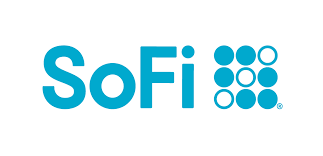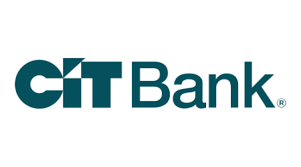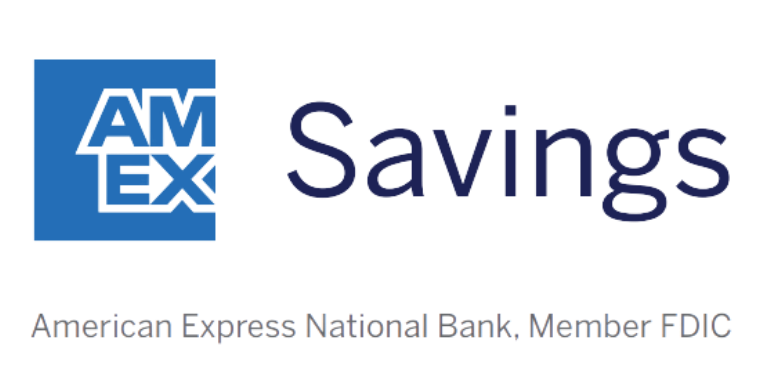ChexSystems is a reporting agency that collects information about bank accounts in your name. When you apply for a new account, your bank or credit union may consider your ChexSystems report when deciding whether to approve you.
It serves the same function as a credit report does when you apply for a loan or credit card, but your ChexSystems report looks at different factors. You want to keep yours in good standing or you may have difficulty opening new bank accounts. Here's what you need to know about ChexSystems and how it can affect you.
What's in a ChexSystems report?
Your ChexSystems report primarily focuses on negative marks associated with your current or past bank accounts, but there's other information in it as well. It contains:
- Identifying information: Your ChexSystems report contains some basic personal information like your name, date of birth, address, and phone number.
- Involuntary account closures: If your bank closes your account because you were suspected of committing fraud or wrote bad checks, this will show up in your ChexSystems report.
- Bounced checks and/or overdrafts: If you overdraw your account once or you have a single check bounce, it's probably not the end of the world. But if you do this repeatedly, your bank will likely report you to ChexSystems.
- Unpaid negative balances: If you owe your bank monthly maintenance or overdraft fees and fail to pay in a timely fashion, your bank will send you to collections and notify ChexSystems of your outstanding debt.
- Debit card and ATM misuse: Frequently exceeding your debit card's daily transaction limit or trying to deposit empty envelopes at an ATM will result in a card misuse notice on your report.
- Excessive account applications: Attempting to open several new bank accounts within a few weeks or months may raise some red flags and lead banks to think you're trying to commit fraud.
- Excessive debit card or check replacements: Banks may also get suspicious about your activity if you repeatedly request debit card or check replacements.
Basically, if your bank thinks you are trying to scam people or you frequently overdraw your account, you're probably going to run into trouble the next time you try to open a bank account.
What is a ChexSystems score?
Your QualiFile score is based on your ChexSystems report. This three-digit number ranges from 100 to 899, with a higher number being better. A low score suggests that you're more likely to commit fraud or to overdraw your account.
Every bank sets its own rules about what constitutes an acceptable score. If you fall below the bank's minimum score, you may not be able to open a bank account there.
It's possible to raise your QualiFile score, though this may not happen quickly. Most of the information in your ChexSystems report stays there for five years. Unless you can prove the negative marks in your report are inaccurate, you just have to wait for them to drop off.
Compare savings rates
Make sure you're getting the best account for you by comparing savings rates and promotions. Here are some of our favorite high-yield savings accounts to consider.
| Account | APY | Promotion | Next Steps |
|---|---|---|---|

Open Account for SoFi Checking and Savings
On SoFi's Secure Website.
Rating image, 4.50 out of 5 stars.
4.50/5
Our ratings are based on a 5 star scale.
5 stars equals Best.
4 stars equals Excellent.
3 stars equals Good.
2 stars equals Fair.
1 star equals Poor.
We want your money to work harder for you. Which is why our ratings are biased toward offers that deliver versatility while cutting out-of-pocket costs.
|
up to 3.80%²
Rate info
You can earn the maximum APY by having Direct Deposit (no minimum amount required) or by making $5,000 or more in Qualifying Deposits every 30 days. See SoFi Checking and Savings rate sheet at: https://www.sofi.com/legal/banking-rate-sheet.
Min. to earn: $0
|
New customers can earn up to a $300 bonus with qualifying direct deposits!¹
|
Open Account for SoFi Checking and Savings
On SoFi's Secure Website. |

Open Account for CIT Platinum Savings
On CIT's Secure Website.
Rating image, 4.50 out of 5 stars.
4.50/5
Our ratings are based on a 5 star scale.
5 stars equals Best.
4 stars equals Excellent.
3 stars equals Good.
2 stars equals Fair.
1 star equals Poor.
We want your money to work harder for you. Which is why our ratings are biased toward offers that deliver versatility while cutting out-of-pocket costs.
|
4.10% APY for balances of $5,000 or more
Rate info
4.10% APY for balances of $5,000 or more; otherwise, 0.25% APY
Min. to earn: $100 to open account, $5,000+ for max APY
|
Earn a bonus of at least $225 after a one-time deposit of $25,000+.
Transfer a one-time deposit of $25,000-$49,999.99 for a bonus of $225. Transfer a one-time deposit of $50,000+ for a bonus of $300. Account must be opened with code PS2025 while this promotion lasts, and funded within 30 days. Bonus will be fulfilled within 60 days from the funding date. There is no period of time where the customer will be required to maintain the funds. Account must be open when bonus is credited. One bonus per account and primary customer. Bonus will be credited into the Platinum Savings Account that fulfills the funding requirement. Funding can be deposited all at once or incrementally.
|
Open Account for CIT Platinum Savings
On CIT's Secure Website. |

Open Account for American Express® High Yield Savings
On American Express's Secure Website.
Rating image, 4.00 out of 5 stars.
4.00/5
Our ratings are based on a 5 star scale.
5 stars equals Best.
4 stars equals Excellent.
3 stars equals Good.
2 stars equals Fair.
1 star equals Poor.
We want your money to work harder for you. Which is why our ratings are biased toward offers that deliver versatility while cutting out-of-pocket costs.
|
3.70%
Rate info
3.70% annual percentage yield as of April 12, 2025. Terms apply.
Min. to earn: $0
|
N/A
|
Open Account for American Express® High Yield Savings
On American Express's Secure Website. |
SoFi disclosure:
¹ New and existing Checking and Savings members who have not previously enrolled in Direct Deposit with SoFi are eligible to earn a cash bonus of either $50 (with at least $1,000 total Direct Deposits received during the Direct Deposit Bonus Period) OR $300 (with at least $5,000 total Direct Deposits received during the Direct Deposit Bonus Period). Cash bonus will be based on the total amount of Direct Deposit. Direct Deposit Promotion begins on 12/7/2023 and will be available through 1/31/26. See full bonus and annual percentage yield (APY) terms at sofi.com/banking#1.
² SoFi members who enroll in SoFi Plus with Direct Deposit or by paying the SoFi Plus Subscription Fee every 30 days or with $5,000 or more in Qualifying Deposits during the 30-Day Evaluation Period can earn 3.80% annual percentage yield (APY) on savings balances (including Vaults) and 0.50% APY on checking balances. There is no minimum Direct Deposit amount required to qualify for the stated interest rate. Members without either SoFi Plus or Qualifying Deposits, during the 30-Day Evaluation Period will earn 1.00% APY on savings balances (including Vaults) and 0.50% APY on checking balances. Only SoFi Plus members are eligible for other SoFi Plus benefits. Interest rates are variable and subject to change at any time. These rates are current as of 1/24/25. There is no minimum balance requirement. Additional information can be found at http://www.sofi.com/legal/banking-rate-sheet. See the SoFi Plus Terms and Conditions at https://www.sofi.com/terms-of-use/#plus.
³ We do not charge any account, service or maintenance fees for SoFi Checking and Savings. We do charge a transaction fee to process each outgoing wire transfer. SoFi does not charge a fee for incoming wire transfers, however the sending bank may charge a fee. Our fee policy is subject to change at any time. See the SoFi Checking & Savings Fee Sheet for details at sofi.com/legal/banking-fees/.
⁴ SoFi Bank is a member FDIC and does not provide more than $250,000 of FDIC insurance per depositor per legal category of account ownership, as described in the FDIC’s regulations.
Any additional FDIC insurance is provided by the SoFi Insured Deposit Program. Deposits may be insured up to $3M through participation in the program. See full terms at SoFi.com/banking/fdic/sidpterms. See list of participating banks at SoFi.com/banking/fdic/participatingbanks.
⁵ We’ve partnered with Allpoint to provide you with ATM access at any of the 55,000+ ATMs within the Allpoint network. You will not be charged a fee when using an in-network ATM, however, third-party fees incurred when using out-of-network ATMs are not subject to reimbursement. SoFi’s ATM policies are subject to change at our discretion at any time.
⁶ Early access to direct deposit funds is based on the timing in which we receive notice of impending payment from the Federal Reserve, which is typically up to two days before the scheduled payment date, but may vary.
⁷ Overdraft Coverage is limited to $50 on debit card purchases only and is an account benefit available to customers with direct deposits of $1,000 or more during the current 30-day Evaluation Period as determined by SoFi Bank, N.A. The 30-Day Evaluation Period refers to the “Start Date” and “End Date” set forth on the APY Details page of your account, which comprises a period of 30 calendar days (the“30-Day Evaluation Period”). You can access the APY Details page at any time by logging into your SoFi account on the SoFi mobile app or SoFi website and selecting either (i) Banking > Savings > Current APY or (ii) Banking > Checking > Current APY. Members with a prior history of non-repayment of negative balances are ineligible for Overdraft Coverage.
How do I get my ChexSystems report?
ChexSystems is legally required to give you a free report every 12 months and whenever you've been turned down for a bank account within the last 60 days.
You can request your ChexSystems report via phone, fax, or mail, but the easiest method is filling out the online form on the ChexSystems website. Once you answer some identity verification questions, you'll be able to view your report immediately and save it if you'd like to come back to it later.
You can request your QualiFile score for free as well, but you can't get this online. You must fill out a paper form and fax or mail it to ChexSystems, which will then mail you your score within 15 business days of receiving your request.
Does my ChexSystems report affect my credit score?
Credit reports tend to focus on loan and credit accounts while ChexSystems reports focus on deposit accounts. But there are a few occasions where you may see some overlap between the two.
For example, if your bank sends you to collections because you haven't paid your outstanding bank fees, the collections account will show up on your credit report and your bank will likely report you to ChexSystems as well.
What do I do if I've been denied a checking or savings account?
If you've been turned down for a deposit account, it may be because of a bad ChexSystems report. Pull yours and then decide on your next steps. You have the following options.
Open an account with a bank that doesn't use ChexSystems
Most banks and credit unions consult ChexSystems before approving new accounts, but not all of them do. Consider working with a bank that doesn't use ChexSystems if you can find one that offers an appealing account and has reasonable fees.
Look for a second-chance checking account
A second-chance checking account is a special kind of checking account designed for high-risk clients. These accounts may have higher fees that often can't be waived and may not allow you to write checks. But if you show that you can handle your money responsibly, your bank may upgrade you to a regular checking account in time.
Try to improve your ChexSystems report
You cannot get rid of legitimate negative information on your ChexSystems report, but you can stop doing the things that put those negative marks there in the first place. Here are a few tips:
- Set up overdraft protection: Many banks enable you to link your checking and savings accounts, so money automatically transfers from your savings account to your checking account if you try to withdraw more than you have in your checking account. This can help you avoid overdrafts on your ChexSystems report.
- Keep an eye on your account balance: Check your balance before making a withdrawal if you know you don't have a lot of money in your account to avoid overdrafts. If you know your account charges monthly fees, find out when these come out of your account every month so you can be prepared.
- Stay connected to your old bank after account closure: You might close a bank account and forget you have bills paid automatically from the now-defunct account. This can result in negative balances you're not even aware of. Provide your bank with updated contact information when you close your account so it can get in touch with you if any issues like this arise.
None of these things will improve your ChexSystems report overnight, but they can make a difference in time.
If you do pay off old debts, get a receipt from your old bank showing that you've done so. Some banks may be willing to work with you even if your ChexSystems report is bad if you can prove you've settled your debts.
What if there's an error in my ChexSystems report?
Disputing an error in your ChexSystems report is similar to disputing an error in your credit report. Reach out to ChexSystems and the bank or credit union associated with the incorrect information and request that they correct the error. If you have proof that the information is wrong, like a copy of a receipt showing you've paid a debt that's still reported as outstanding, send a copy of this as well.
ChexSystems has up to 30 days (or 21 days for Maine residents) to investigate the matter from when it receives your request. If it determines the information listed in your report is accurate, it will stay as is. But if it determines that the information is wrong and could prohibit you from opening up a new bank account, it must correct the issue. This can take a little time, so you may have to wait a while before you can open your new bank account.
Even if you think your ChexSystems report is healthy, it never hurts to double-check, especially if you plan to apply for a new bank account in the near future. Doing so only takes a few minutes and it can save you a ton of hassle.
FAQs
-
Most banks and credit unions use ChexSystems or another type of consumer report, but some financial institutions offer second-chance bank accounts that are available if you have negative information on your ChexSystems report.
-
If you believe your ChexSystems report contains inaccurate information, you can dispute it online, by phone, or via mail. If the information is accurate -- for example, you had an account that was closed with a negative balance -- you'll need to repay the bank the money you owe. Some banks, creditors, and collections agencies will negotiate with you and allow you to pay less than the amount due. Otherwise, you'll need to wait until the information no longer appears on your report, which typically happens after five years.
-
Most negative information remains on your ChexSystems report for five years. However, some negative information -- like if your bank sent your account to collections because you owed money -- will likely stay on your credit reports for seven years under the rules of the Fair Credit Reporting Act.
We're firm believers in the Golden Rule, which is why editorial opinions are ours alone and have not been previously reviewed, approved, or endorsed by included advertisers. Motley Fool Money does not cover all offers on the market. Motley Fool Money is 100% owned and operated by The Motley Fool. Our knowledgeable team of personal finance editors and analysts are employed by The Motley Fool and held to the same set of publishing standards and editorial integrity while maintaining professional separation from the analysts and editors on other Motley Fool brands. Terms may apply to offers listed on this page. APYs are subject to change at any time without notice.